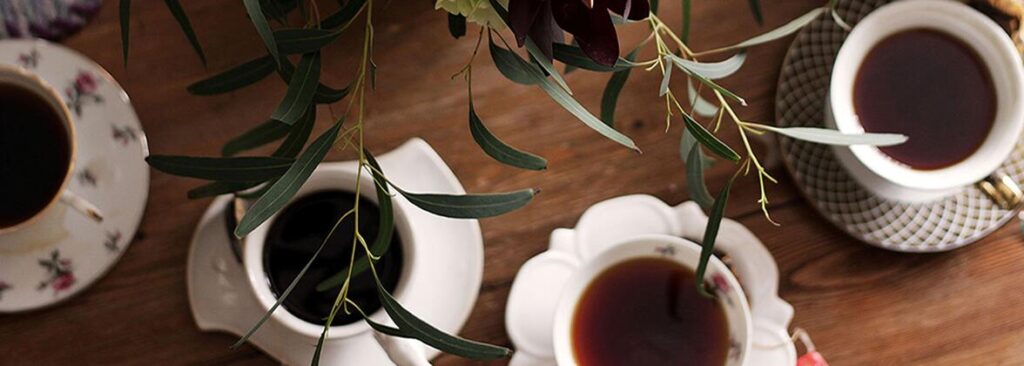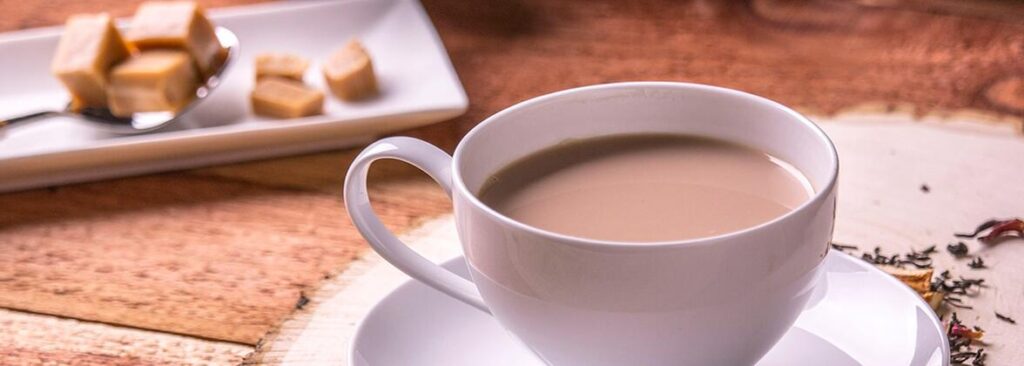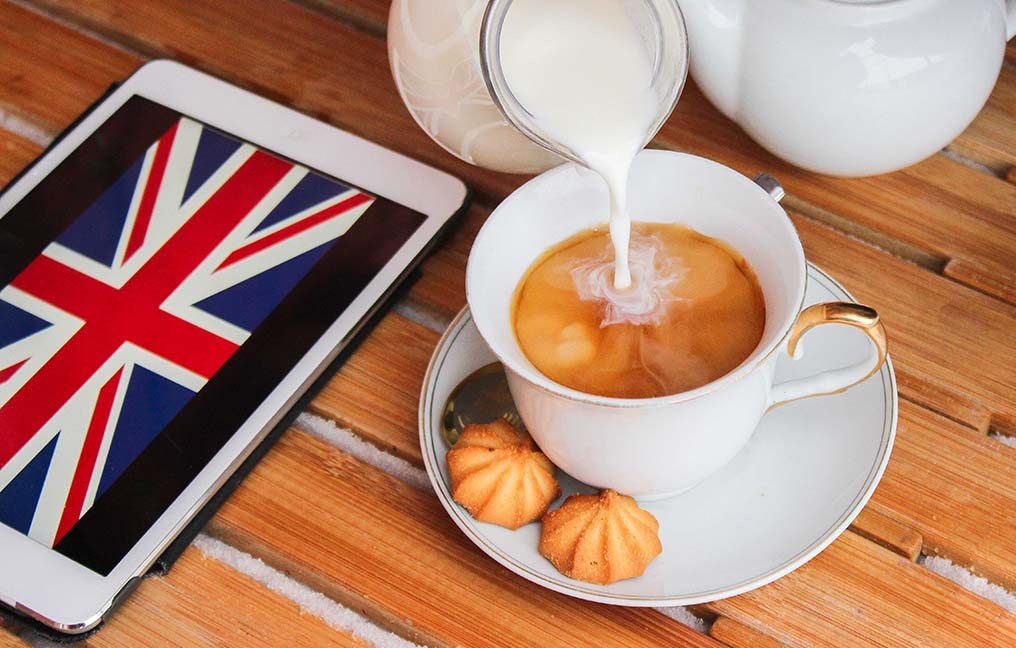English tea is a world brand, famous varieties are also loved in other countries, although tea bushes do not grow on the island due to the too cold and rainy climate. The tea boom began in the colonial era, when tea leaves were brought into the country from India and Ceylon.
Continuing to follow the steps of the history of tea, one cannot fail to mention England, the only European country where its own unique tradition of English tea drinking has developed, with its own rules and regulations. The phrase “English tea” for many is associated with quality, aristocracy, high society. Almost everyone who is asked “what associations do you have with England?” will answer, “five o’clock” or “English breakfast” for Ukraine. How did tea manage to take such a position in the culture of England? What was the historic procession of tea in Shakespeare’s homeland? I think it will be interesting to consider the history of tea in England in a chronological format?
England was not the European discoverer of tea. First there was Portugal, then Holland, and only thanks to the second, Great Britain learned about this wonderful drink. Initially, in England, tea was called “cha” – in accordance with the Chinese port where English merchants bought goods, in the port of Canton. The modern name “tei” appeared a little later, due to a change in the region of purchases, when they began to purchase it in Amoy. There, the word “tea” is pronounced as T ‘e (more on the pronunciation of the hieroglyph “tea”). Despite early references, tea was not brought to Europe until the next century.
The arrival of tea in England
It was then, starting in 1662, that English tea became the fashionable drink of aristocrats. And not without a romantic story and a beautiful woman. Catharina of Braganza, the Portuguese princess, the wife of the English king Charles II, was very fond of drinking tea, and instilled this love in the court ranks. Since the queen herself abandoned wine in favor of tea, the secular elite, lords and ladies followed her example, and soon, tea drinking became very popular in the highest circles of England, while pushing the traditional ale.
Having learned about the preferences of the royal family, the English East India Company, in order to gain the favor of His Majesty, for two years 1664-1666, delivered piece batches of tea from Europe as a present to the court. It was all tea in England until 1668. Only since 1669, the same joint-stock company received a monopoly on the trade turnover of tea and began to supply it to England, contributing to the spread of the drink.
At the very beginning of its history, English tea filled only pharmacies and coffee houses in Great Britain. And then, towards the end of the 17th century, having won the hearts of many gourmets, coffee and tea moved into private ownership. Tea was present at the most dangerous risky deals, love affairs, coffee houses turned into closed clubs for men. One of these clubs, Edward Lloyd’s Coffee House, was the beginning of the organization of the famous insurance company Lloyds of London.
EXIT OF TEA FROM CLUB CLUBS
And if it were not for the temperamental Princess Katarina of Braganza, tea would have been an exclusively male drink, since it was drunk only in coffee houses where women were not allowed to enter. This was prevented by her personal example. She changed the one-sided view of tea in England as a medical and healing agent, legalized tea drinking in secular circles.
Since 1685, not a single aristocrat has doubted that tea will be served at a literary evening.
A year later, tea could already be bought on the market, the import of tea was part of the usual trade for the East India Company. The demand for it increased, and the circle of admirers of this drink expanded, which led to the need to increase its supply from Asia.

English tea – import and shops
The year 1717 is significant for London in that it was then that the long-awaited first tea shop called the Golden Lion appeared, where both men and women could drink tea.
And three years later, an event occurred in history that further contributed to the consolidation of the tea tradition in England. In order to strengthen and develop local production, the British Parliament imposed a ban on the import of textiles. But the silk merchants did not lose their heads and in a short time organized their work on the import of tea. Interest in tea grew as the drink became more accessible. Now, wider sections of the population could afford to drink tea.
Tea gained leadership in the market, trade became more active, and a direct Canton-Britain channel was created specifically for the supply of tea. Stable prices for tea were established. Tea won the competition with coffee.
More and more imported tea filled England in the first half of the 18th century. According to some reports, in fifty years, from 1650 to 1700, about 1,816,500 pounds of tea were imported into Britain.
And in the 1750s, the legal supply of tea to England was already in the millions, the figures reached forty million pounds. Along with legal trade, smugglers appeared, importing low-quality tea into the country, mixing sand and sawdust. In 1725, contraband tea supplies were hardly inferior to the official supplier in terms of the amount of imported and sold goods. But, despite the high probability of buying low-quality tea, it was still popular, people bought and drank tea
English tea imports were limited and Sri Lanka had not yet grown it. About 3 pounds of tea (about 1.3 kg) per person per year. But since the 1840s, its consumption has increased dramatically, because the famous five o’clock entered the history of English tea thanks to the Duchess Anna of Bedford
A breakthrough in the world turnover of tea was the creation by the United States of America of clipper ships, which for the first time in the 1830s conquered the waters of the oceans with their speed and reliability. They have been the most common means of transporting tea since the 1840s, when economic relations between China and England resumed again. Clippers took half the time to get to China and back, which significantly reduced transportation costs.
The clippers made their contribution to the history of tea due to a significant reduction in its prices, now tea has become not only the privilege of the rich, but also of the lower classes. Since 1869, a new transport route has been opened – the Suez Canal, which these vehicles easily mastered. Clippers were indispensable until the late 1880s. The mass consumption of tea and its availability created a need for competition among merchants, often the British organized clipper races, which prompted a justified desire for faster and better work.
The English tea merchants used their imagination to create new flavors. In order to get a new rich taste and unique aroma, tea merchants mixed different types of tea collected in different regions. Since 1870, new tea blends have been created. This led to the fact that the tea market expanded its possibilities, now tea could be chosen based on one’s own preferences and taste. Customs duties on the import of tea have decreased, respectively, tea has become even more affordable. Since the second half of the 80s, when tea began to be delivered from Ceylon, prices have fallen even more.
Starting from 1938, tea consumption amounted to 96.11 pounds per person (more than 40 kg!!!), tea by this time was firmly entrenched in England, as well as in the cultural traditions of the British. England became the “European homeland of tea”.






